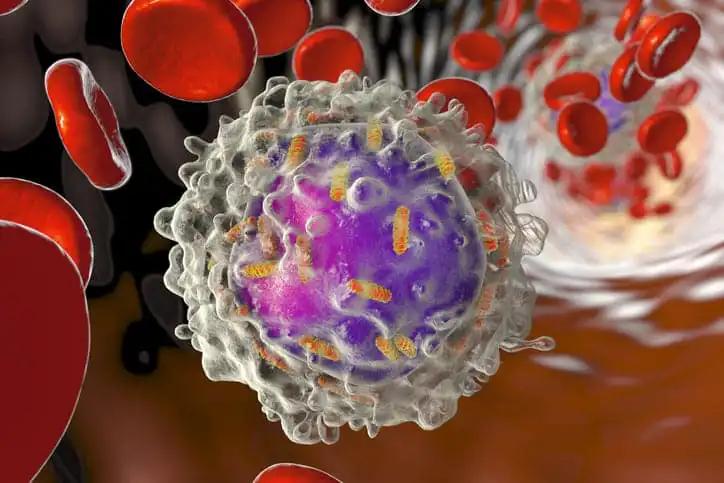KEY TAKEAWAYS
- The Phase 2 I-Dara study evaluated the efficacy and safety of Ixazomib and Daratumumab without Dexamethasone in frail geriatric patients with relapsed myeloma.
- The study’s primary aim was to assess the VGPR rate at one year in elderly, frail myeloma patients receiving the Ixazomib and Daratumumab combination.
- Frail geriatric patients with relapsed myeloma, who had an IMWG score of 2 and had received 1 or 2 prior treatments, were enrolled.
- 63 patients were evaluated, with 55 enrolled between March 2018 and September 2021.
- The combination of Ixazomib and Daratumumab without Dexamethasone demonstrated a favorable efficacy profile for frail myeloma patients, even in lenalidomide-refractory and high-risk cytogenetic patients.
Frailty is associated with a poorer prognosis in elderly myeloma patients, particularly in the context of relapse. This poor prognosis is primarily attributable to a high incidence of treatment discontinuation due to adverse events (AE). Dexamethasone causes an increased incidence of infections and metabolic adverse effects. Evaluation of the efficacy and safety of Ixazomib and Daratumumab without Dexamethasone in frail geriatric patients with relapsed myeloma. Here are the most recent findings from the second phase of the I-Dara study. Ixa-Dara-nave RRMM patients received oral Ixazomib (4 mg on days 1, 8, 15), IV Daratumumab (16 mg/kg on days 1, 8, 15, 22, cycles 1-2; days 1, 15, cycles 3-6; days 1, cycles 7+), and IV Methylprednisolone before Daratumumab (100 mg on days 1, 8, cycle 1 and then 60 mg). If their IMWG score for frailty was 2, they were enrolled after 1 or 2 prior treatments.
The primary outcome measure was the very good partial response rate (VGPR) at one year. The secondary endpoints included ORR, PFS, OS, and toxicity according to version 5 of the NCI-CTCAE. About 63 patients were evaluated, and 55 were enrolled between March 2018 and September 2021. Patients were experiencing a first (n = 36) or second (n = 19) relapse. Around 35 patients (64%) had prior exposure to bortezomib, 37 (67%) had previous exposure to lenalidomide (Len), and 23 (42%) were resistant to Len. The median age was 82 (range: 72-93). All patients had a frailty score of 2, and thirteen (24%) had a score of 3 or 4. In 41 patients, ISS at diagnosis was stage I (n = 11), II (n = 18), or III (n = 12). About 17 (36%) patients possessed high-risk (HR) cytogenetics, including t(4;14) (n = 8) and del17p (n = 10). The median duration of Tx (DOT) in 14 patients with ongoing Tx was 22 months [minimum to maximum: 16-40 months] as of the data termination date (19 January)]. The median duration of treatment (DOT) in 41 patients who discontinued treatment was 10 months [min-max: 0-31]; 28 had progressive disease (PD). During the study, 14 patients passed away due to Daratumumab-related bronchospasm (D1C1), Ixazomib-related toxicity (C2), sepsis (n = 3), pneumonia (n = 2), and PD (n = 7).
Regarding toxicity, 55% of patients experienced an adverse event of grade 3 severity. Thrombocytopenia (n = 10), other cytopenias (n = 5), anemia (n = 3), infection (n = 6), gastrointestinal disorders (n = 5), and hypertension (n = 3) were the most frequent adverse events of grade 3-4 severity. The VGPR rate at one year is 32% (34% overall), while the ORR rate at one year is 70% (74% overall). In Len-refractory patients, the VGPR rate at 1 year is 40%, and the ORR is 70%, whereas in HR patients, the VGPR rate is 60% and the ORR is 80%. With a median follow-up of 23.1 months, the median PFS is 18.5 months, and the median OS is not reached (75% OS is estimated to be 27.9 months). In this elderly, frail population, the Ixa-Dara combination is practicable and has a favorable efficacy profile, even in Len-refractory and HR-cytogenetic patients. Early toxicity is still a concern in this population, although Dara SC makes it more manageable. The late benefit is consistent with the fact that one-third of patients are still receiving treatment.
Source:https://library.ehaweb.org/eha/2023/eha2023-congress/386720/margaret.macro.ixazomib.and.daratumumab.without.dexamethasone.28i-dara29.in.html?f=menu%3D16%2Abrowseby%3D8%2Asortby%3D2%2Ace_id%3D2489%2Aot_id%3D27922%2Atrend%3D4016%2Amarker%3D4178
Clinical Trial: https://clinicaltrials.gov/ct2/show/NCT03757221
Margaret Macro, Cyrille Touzeau, Clara Mariette, Salomon Manier, Sabine Brechignac, Laure Vincent, Benjamin Hebraud, Olivier Decaux, Samantha Schulmann, Caroline Lenoir, Pascal Godmer, Agathe Farge, Laure Peyro Saint Paul, Jean-Jacques Parienti, Xavier Leleu/IXAZOMIB AND DARATUMUMAB WITHOUT DEXAMETHASONE (I-DARA) IN ELDERLY FRAIL RRMM PATIENTS: RESULTS OF THE MULTICENTER PHASE 2 STUDY (IFM 2018-02) OF THE INTERGROUPE FRANCOPHONE DU MYÉLOME (IFM)./Inc, M. G. (n.d.). IXAZOMIB AND DARATUMUMAB WITHOUT DEXAMETHASONE (I-DARA) IN ELDERLY… by Margaret Macro. Library.ehaweb.org. Retrieved July 14, 2023, from https://library.ehaweb.org/eha/2023/eha2023-congress/386720/margaret.macro.ixazomib.and.daratumumab.without.dexamethasone.28i-dara29.in.html?f=menu%3D16%2Abrowseby%3D8%2Asortby%3D2%2Ace_id%3D2489%2Aot_id%3D27922%2Atrend%3D4016%2Amarker%3D4178



